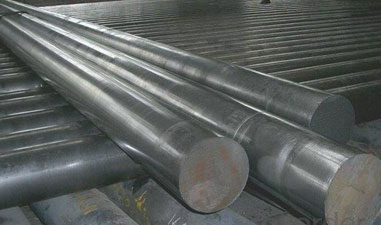Stainless steel, known for its corrosion resistance and durability, encompasses various grades suited for diverse applications. Among these, 410 stainless steel stands out for its exceptional properties, making it a prime choice in numerous industries.
Introduction to 410 Stainless Steel Tubing

410 stainless steel tubing is a type of steel known for its remarkable properties and versatile applications. It belongs to the martensitic stainless steel family, characterized by its exceptional strength, corrosion resistance, and heat treatability. This specific grade, composed mainly of iron, chromium, and carbon, also contains elements like manganese and nickel in precise proportions, contributing to its distinct characteristics.
The tubing’s martensitic structure imparts it with inherent hardness and durability, making it suitable for various industrial, automotive, and construction applications. It’s widely used in manufacturing equipment, machinery, exhaust systems, catalytic converters, structural components, reinforcing bars, and more, owing to its robustness and resistance to corrosion and heat.
410 stainless steel tubing stands out in the stainless steel spectrum for its reliability and adaptability across multiple industries, making it a popular choice for various demanding applications.
Understanding the Composition of 410 Stainless Steel
Chemical Makeup
The chemical makeup of 410 stainless steel comprises primarily iron, chromium, and carbon. Additionally, it contains specific proportions of elements like manganese and nickel. This composition contributes to the unique properties and characteristics that define 410 stainless steel tubing. The presence of chromium in this alloy provides excellent corrosion resistance, while carbon content contributes to its hardness and strength. Manganese and nickel, in their respective ratios, further enhance specific attributes, making 410 stainless steel a versatile material for various applications.
Properties and Characteristics
The properties and characteristics of 410 stainless steel tubing are quite remarkable. This grade is renowned for its:
- Strength and Hardness: 410 stainless steel exhibits exceptional strength and hardness due to its martensitic structure, making it suitable for applications requiring robust materials.
- Corrosion Resistance: It offers good resistance to corrosion, particularly in mildly corrosive environments, thanks to its chromium content.
- Heat Treatability: This type of stainless steel can undergo heat treatment processes, allowing for alterations in its mechanical properties and hardness.
- Magnetic Nature: Due to its martensitic crystalline structure, 410 stainless steel is inherently magnetic, distinguishing it from other stainless steel grades.
Applications of 410 Stainless Steel Tubing

Industrial Uses
410 stainless steel tubing finds extensive use across diverse industrial applications due to its exceptional properties. Some prominent industrial uses include:
- Manufacturing Equipment: It’s utilized in the production of various manufacturing equipment and machinery where strength and corrosion resistance are essential.
- Tools and Components: Tools and components requiring durability and reliability often incorporate 410 stainless steel tubing due to its robust nature.
- Chemical Processing: In industries involving chemical processing, this grade of stainless steel is employed for its corrosion resistance, especially in mildly corrosive environments.
- Oil and Gas Sector: Components used in the oil and gas sector often utilize 410 stainless steel tubing due to its resistance to certain corrosive elements present in these industries.
- Power Generation: In power plants and related facilities, 410 stainless steel finds applications in equipment and parts where high strength and resistance to corrosion are imperative.
Automotive Industry
In the automotive industry, 410 stainless steel tubing plays a crucial role due to its unique properties and resilience. Here’s how it’s utilized:
- Exhaust Systems: The tubing’s resistance to corrosion and heat makes it an ideal choice for constructing exhaust systems. It withstands high temperatures and the corrosive elements present in exhaust gases, ensuring longevity and reliability.
- Catalytic Converters: Components within catalytic converters benefit from 410 stainless steel tubing, which offers durability and the ability to withstand the chemical reactions involved in emission control systems.
- Automotive Components: Various automotive components, such as brackets, fasteners, and structural parts, incorporate 410 stainless steel tubing for its strength, corrosion resistance, and reliability in demanding automotive applications.
Construction Sector
Within the construction sector, 410 stainless steel tubing serves various purposes owing to its specific properties:
- Structural Components: It’s used in the construction of structural elements due to its strength and durability. Beams, columns, and other load-bearing components benefit from its robust nature.
- Reinforcement Bars: 410 stainless steel tubing is employed as reinforcement bars in concrete structures due to its corrosion resistance, enhancing the longevity and integrity of the construction.
- Architectural Applications: For architectural features requiring both aesthetics and durability, such as facades, handrails, and decorative elements, 410 stainless steel tubing is preferred for its visual appeal and resistance to corrosion.
Conclusion
In conclusion, 410 stainless steel tubing emerges as a highly versatile and reliable material across multiple industries. Its unique blend of properties, including exceptional strength, corrosion resistance, heat treatability, and suitability for various applications, underscores its significance in industrial, automotive, and construction sectors.
The tubing’s capacity to withstand harsh conditions, coupled with its durability and adaptability, makes it an ideal choice for manufacturing equipment, automotive components, structural elements, and architectural features.
With its magnetic nature, corrosion resistance, and ability to endure high temperatures, 410 stainless steel tubing stands out as a robust and dependable material, contributing to the efficiency, durability, and reliability of diverse products and structures across industries.
FAQs
- Is 410 stainless steel magnetic?
- Yes, due to its martensitic structure, 410 stainless steel is magnetic.
- Can 410 stainless steel be welded?
- While it can be welded, it requires preheating and post-weld heat treatment to mitigate potential issues.
- What makes 410 stainless steel tubing suitable for high-temperature applications?
- Its heat treatment capability and resistance to scaling contribute to its performance in high-temperature environments.
- How does 410 stainless steel tubing compare to 304 stainless steel?
- While both are stainless steels, 410 is a martensitic grade with higher strength and hardness, whereas 304 is an austenitic stainless steel with better corrosion resistance.
- Is 410 stainless steel tubing recyclable?
- Yes, like other stainless steel grades, 410 stainless steel tubing is fully recyclable, contributing to its sustainability.
